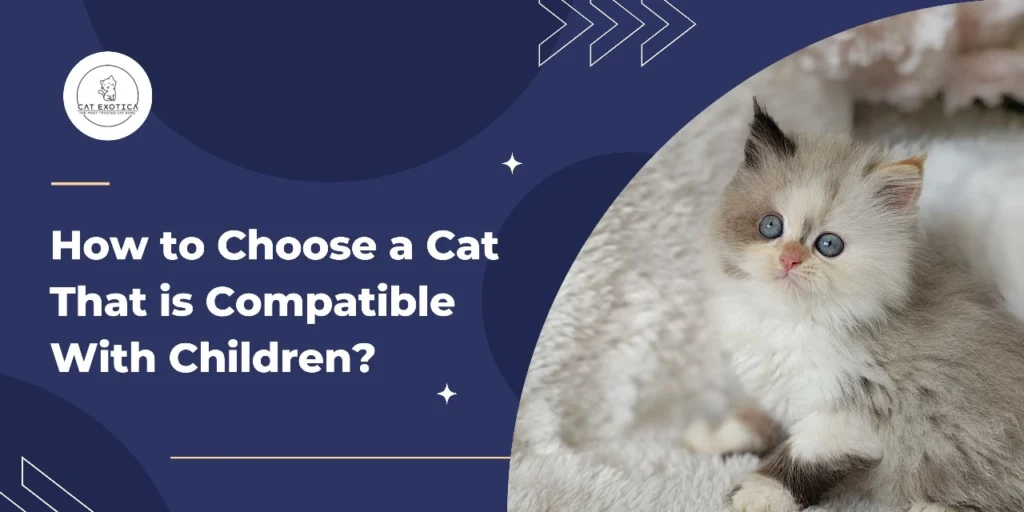Introduction
cats can make a wonderful companion for children. Having pets in the family can bring joy and teach responsibility to young members for their playful nature, affectionate behavior and unique personalities. However, not all cats are equally suited to homes with kids. Choosing the right cat requires understanding your family’s needs, the pet’s personality and how well it adjusts to a busy family.
If you're planning to bring a feline friend into your home, here’s a guide to help you choose a cat compatible with children.
1. Look out for a Gentle and Patient Temperament
When selecting a cat for a family, temperament is key. Cats who are gentle, tolerant, and patient handle children's unpredictable energy better. Avoid cats that are easily startled, aggressive, or overly shy, as they may not cope well with loud noises or sudden movements.
Breeds like Ragdolls, Birmans, and Maine Coons are often recommended for families because of their calm and friendly dispositions. However, remember that every cat is unique; it’s critical to spend time with the individual cat to observe its behavior before making a decision.
2. Consider the Cat’s Age
While kittens are adorable, they may not always be the right choice for families with young children. Kittens are fragile, playful, and full of energy, which can sometimes lead to scratches or accidental injuries during rough play.
Older cats or young adults might be a better fit, especially if they’ve been socialized around children. Adult cats often have established personalities, making it easier to assess whether they’ll thrive in a family setting.
If your children are older and understand how to handle pets gently, a kitten could be a fun and rewarding choice. But for toddlers or preschoolers, an easygoing adult cat might be safer and less stressful for everyone.
3. Check for Prior Exposure to Children
If you’re adopting from a shelter or rescue, ask if the cat has previously lived in a home with kids. It's easier for cats to feel at ease around kids if they've been around them before.
On the other hand, a cat with no experience or negative experiences with children might need time, training, or never fully adjust. Choosing a child-friendly cat will ease the transition into your home and reduce stress-related behavior issues.
4. Prioritize Health and Energy Levels
Healthy cats with balanced energy levels are usually better equipped to keep up with playful kids. A cat that’s too lethargic or has chronic health problems might not appreciate attention and activity in a busy household.
Before adopting, make sure the cat has been checked by a vet, is up to date on vaccinations, and shows no signs of serious illness. Healthy cats enjoy interacting with their family and play.
5. Teach Your Children How to Interact with Cats
No matter how friendly a cat is, it’s crucial to teach your children how to behave around pets. Show them how to approach a cat gently, avoid pulling tails or ears, and respect the cat’s need for space and quiet time.
Encourage your kids to play with the cat using toys rather than their hands to avoid scratches or bites. Setting clear boundaries for both the cat and the children will foster a safe and happy relationship.
6. Consider Grooming and Maintenance Needs
Some cat breeds require more grooming and maintenance than others. Long-haired cats, like Persians or Himalayans, need regular brushing to avoid matting. If you’re looking for a low-maintenance pet, consider short-haired breeds like British Shorthairs or American Shorthairs.
Think about whether your children are old enough to help with grooming tasks. Involving kids in cat care routines can teach them responsibility and strengthen their bond with their pet.
7. Adopt from a Reputable Source
When choosing a cat, it’s important to adopt from a reputable shelter, rescue organization, or breeder. This ensures the cat has been properly cared for and socialized. Avoid purchasing from pet shops or unverified sellers who may not prioritize animal welfare.
A shelter's adoption counselor can help you find a cat that fits your family's lifestyle and experience level. Don’t hesitate to ask questions and interact with different cats before deciding.
Conclusion
Bringing a cat into a children's family is a big decision. However, with thoughtful preparation, it can lead to years of love and companionship. By choosing a cat with a calm temperament, considering age and health, and teaching your children respectful interactions, you can create a safe and joyful environment for both your kids and your new feline friend.
If you’re looking for cats and kittens to bring home, consult an expert breeder who can guide you in choosing a healthy, well-socialized pet that’s the right fit for your family. An experienced breeder can help you find a companion that matches your lifestyle and ensure a smooth adoption process.

